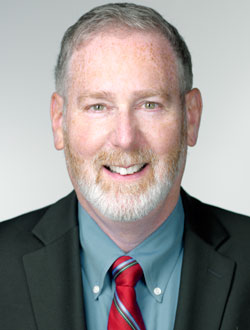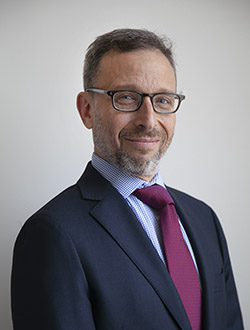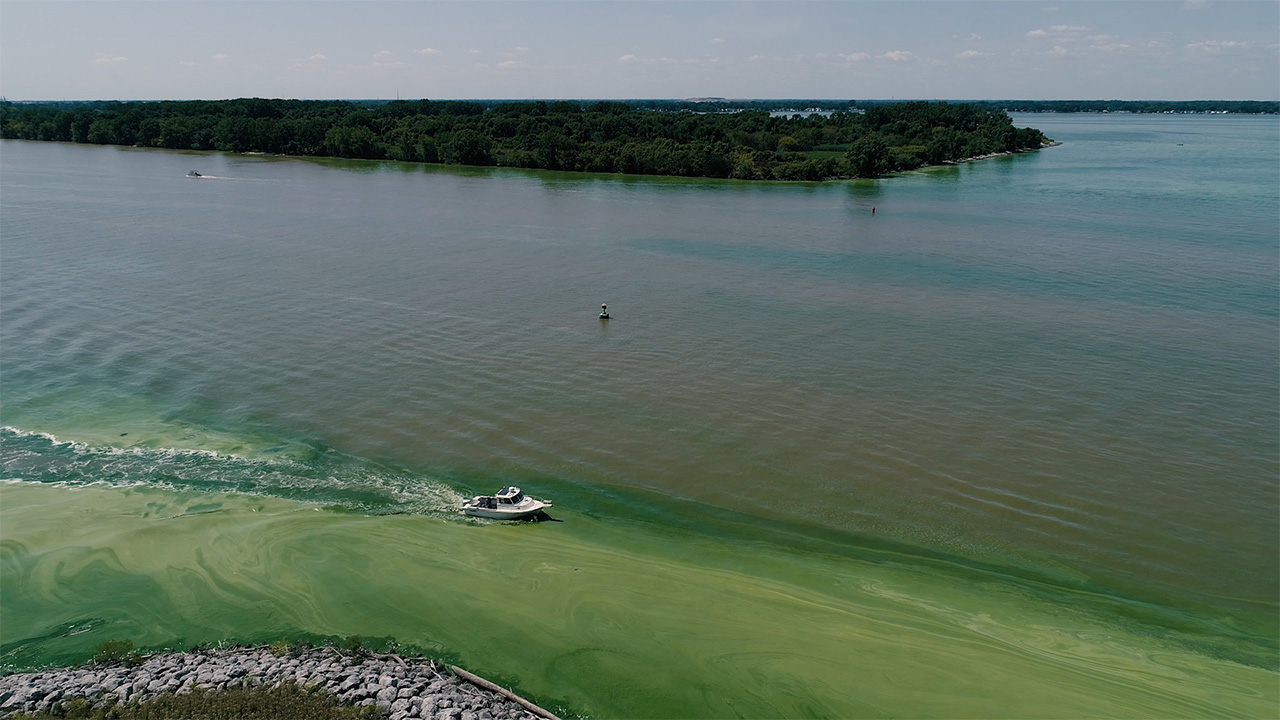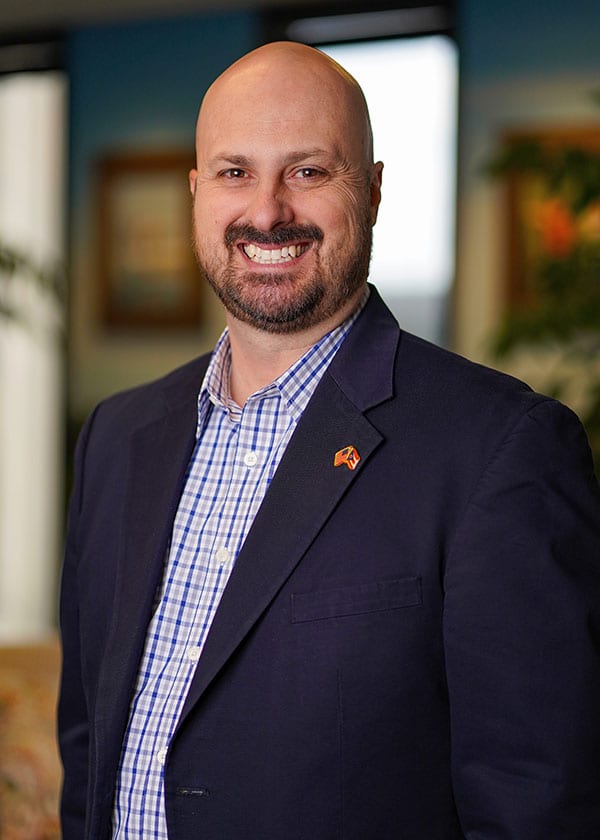
For the second time in two years Chicago-based Environmental Law & Policy Center appears to have forced the Ohio Environmental Protection Agency’s hand in seeking solutions to Lake Erie’s ongoing nutrients pollution problem.
In U.S Northern District of Ohio Court hearings on July 17 and July 30, ELPC attorneys sought a summary judgement requiring the U.S. Environmental Protection Agency to force OEPA to create a total maximum daily load for western Lake Erie, and a set, enforceable schedule for achieving nutrients reductions.
The suit was filed Feb. 7. Just a few days later, Ohio Gov. Mike DeWine announced the OEPA intended to create a TMDL, something environmental advocates had been seeking for years.
“The judge has heard extensively from both plaintiffs, ELPC and Advocates for a Clean Lake Erie,” said Howard Learner, ELPC director. “The judge heard arguments from both sides on the Clean Water Act issues, all of which are focused on the recurring, longstanding toxic algae problem in western Lake Erie. The evidence is clear: 90% of the phosphorous pollution causing the toxic algae outbreaks almost every summer is attributable to agriculture runoff into the water and that’s principally fertilizer and manure.”

Howard Learner, Environmental Law & Policy Center
According to Learner, the lawsuit filed against the U.S. EPA claims the organization’s failure to create a TMDL, which sets a specific limit of nutrients pollution, is a violation of the Clean Water Act.
“The cities of Toledo and Oregon have filed an amicus brief on our side,” Learner said. “The state of Ohio has filed an amicus brief that says the state, in effect, is doing enough.”
While Ohio has agreed to meet a goal of reducing phosphorous runoff by 40% by 2025, Learner said, it has already missed a 2020 goal for reducing such runoff.
Similar to its February 2020 move, Ohio officials in 2018 changed course after another federal lawsuit was filed by ELPC, according to senior ELPC attorney Rob Michaels.

Rob Michaels, Environmental Law & Policy Center
“There’s been years of game-playing by both agencies. If a body of water can’t be remediated or cannot achieve water quality standards through permitting alone, it must be declared impaired and if it’s declared impaired, they must create a TMDL,” he said. “Ohio failed to deem Lake Erie impaired even though it was obviously impaired, and the U.S. EPA said ‘That’s okay.’ And then we sued. The U.S. EPA withdrew its approval of Ohio’s plan and then Ohio said ‘Fine, we’ll deem it impaired.’”
Despite Ohio agreeing to create a TMDL, Learner said, the ELPC will not be dropping the lawsuit and awaits Judge James Carr’s decision in the next several months.
Ohio says it’s moving forward with a TMDL
In February DeWine announced the OEPA would create a TMDL for the Western Basin.
“We committed to drafting a TMDL for U.S. EPA in the next two to three years,” OEPA spokesman James Lee said. “OEPA is not yet at the stage of development for the Maumee watershed TMDL to determine exactly what or where numbers will apply, and any proposals will go through public comment before a decision is made.”
According to Lee, OEPA staff will perform most if not all of the stream water quality assessments, though some data and measurements will come from third-party sources, including Heidelberg University’s National Center for Water Quality Research.
“The OEPA has completed numerous TMDLs for watersheds and waterbodies throughout the state over many years through an established process. That includes stakeholder outreach and engagement and we are confident in our ability to conduct a TMDL in the Maumee watershed area,” he said.
Lee said the OEPA believes the TMDL will be a valuable component of a Lake Erie strategy. He declined to comment on the pending litigation.

Harmful algal bloom in western Lake Erie (Great Lakes Now Episode 1013)
Advocates say the sooner a TMDL arrives the better
“In my view, doing a TMDL is a good thing, and the sooner the better and for obvious reasons,” said Sandy Bihn, director of Lake Erie Waterkeeper. “What happened in Grand Lake St. Mary, those waters were declared impaired and they created a TMDL. They found that 80% of the nutrients sources were coming from manure.”
Bihn said she’s been advocating for TMDLs for decades.
“I asked for a TMDL on Maumee Bay in the 1980s, and they refused to do it,” she said. “If they had done it, would it be as bad as it is today?”
Paul Pacholski, president of the Lake Erie Charter Boat Association said he, too, welcomes a TMDL.
“We’ve understood for a long time that a TMDL would take years to perform and it was like kicking the can down the road two to four years, likely. But with the lack of anything else getting done we have to re-evaluate that, because we have to hold the feet of our leaders to the fire. Will it be the answer? I hope so.”
Pacholski said he believes a TMDL for the Western Basin could be effective because of its ability to pinpoint problem sources. A proper TMDL would allow scientists to better track down and isolate specific pollution sources and track the effectiveness of voluntary agricultural practices and other remediation actions.
“Get the before numbers and the after numbers,” he said. “A TMDL will basically study the amount of nutrients coming out and the effect of your cleanup efforts afterward. Let’s target that and put the money there and see exactly what gives us the best bang for the buck.”
Farm rep says TMDL is the wrong path
Ohio Farm Bureau spokesman Ty Higgins said he believes a TMDL will not provide solutions for cleaner water anytime soon.
“It’s going to be cumbersome not only in what it will cost, but it’s going to take a lot of time to develop and we are still doing a lot on a voluntary basis,” he said. “Especially in northwest Ohio. As a state we have one of the most-regulated systems in the nation, as far as agriculture is concerned.”

Ty Higgins, Ohio Farm Bureau
Higgins said farmer participation in DeWine’s new H2Ohio program is high. The H2Ohio program intends to disburse hundreds of millions of dollars in the next several years in an effort to improve water quality in Ohio, with an emphasis on Lake Erie. A significant portion is intended to subsidize farmers’ efforts in those improvements.
“We saw rooms filled with Ohio farmers in the latter part of 2019 and in 2020 of farmers wanting to know how to get involved,” he said. “Already we have 2,000 farmers and they’ve enrolled over 2 million acres in H2Ohio, so there’s certainly a lot of interest in doing what they need to do to make the water cleaner in Ohio. It’s already proven they want to take the first steps, but a federal TMDL might hamper that farmer interest we have in northwest Ohio.”
According to Higgins, a federal, top-down process will prove a burdensome undertaking. He cited federal regulations in the cleanup of Chesapeake Bay that limited activities farmers could engage in to help clean up the bay.
“The governor’s leadership can limit those negative impacts,” Higgins explained, “and allow farmers to continue doing what’s been proven scientifically to improve soil health and the water quality improvements that follow. We’re making progress every day in that aspect, but if we’re going to have a TMDL we’d certainly much rather have a state TMDL than a federal TMDL.”
But not everyone is enamored with Ohio’s voluntary H2Ohio efforts.
Chesapeake Bay advocate say voluntary efforts fall short
Rob Beach, vice president of communications for the Chesapeake Bay Foundation, said he and other clean water advocates are familiar with voluntary programs and efforts.
“It was decades of failed voluntary efforts that preceded the litigation that was settled with the Obama administration that established the Chesapeake TMDL,” Beach explained. “That really put teeth into the cleanup plan.”
CBF’s litigation gained a TMDL creation order around 2009. According to Beach, establishing a TMDL is the first real step in solving a watershed’s issues, because without one, there is no baseline.
“TMDLs are nothing more than the pollution limits themselves,” he said. “The establishment of TMDLs is crucial in setting limits. The EPAs must then use their authority to ensure those limits are met. That’s the biggest difference between having a TMDL and any previous voluntary measures we had.”
According to Beach, Chesapeake Bay, much like Lake Erie, has significant nutrient sources from animal farms, including poultry operations in Maryland and Virginia and dairy herds in Pennsylvania.
In Chesapeake Bay’s case, a single TMDL figure was divided among the watershed’s six states, the numbers being derived from many factors. It was then left up to each state how to best achieve its own total limit within its own various watersheds.
“While the lawsuit was settled more than 10 years ago, it’s a decades-long process,” Beach said. “The reality is it will take these states and localities awhile. It’s not something that’s going to happen overnight.
During the past decade, Beach said, the Chesapeake Bay has seen promising changes.
“The long-term trends are showing improvement,” he said. “Underwater dead zones are getting smaller, crab populations are coming back over the long-term, and grasses are becoming more prevalent. So what we’re seeing is signs of progress. Sometimes litigation is a last resort, but it’s a step that needs to be taken to hold people accountable.”
H2Ohio path to clean water flawed, ELPC says
According to Michaels, the H2Ohio program isn’t improving water quality enough to reduce phosphorous loading by 40% by 2025, a reduction required by Ohio’s signature on the Great Lakes Water Quality Agreement.
“Every indication with Ohio, while they say they’re going to do a TMDL, they continue to rely primarily on voluntary measures and incentives and payments to agriculture operators to try to get them to either reduce phosphorous loading or mitigate the effects of phosphorus loading,” he said. “Meanwhile the state continues to permit new concentrated animal feeding operations in the Maumee watershed.”
According to H2Ohio, 2021 will see disbursements of $50 million to agriculture operations in 14 northwestern Ohio counties to assist farmers in implementing practices and projects to reduce nutrients pollution. Michaels said Ohio can’t afford to pay for ineffective methods that don’t produce change.
“You don’t say ‘We just want to dump our waste, and it’s too expensive for us to pay so it’s your problem. If you want us to stop then you pay us, and if you don’t pay us we won’t stop,’” he said. “That’s not fair to the people in Toledo, it’s not fair to the people in Lucas County and everyone else who relies on Lake Erie for drinking water and fishing and recreation.”
Michaels said a U.S. EPA-supervised solution remains the only viable one.
“A statement saying we’ll do this in the future, especially in such unpredictable times, isn’t enough to eliminate the need for a remedy to a violation that’s occurred,” Michaels said. “Summary judgment is needed and should be entered in our favor because the U.S. EPA violated its legal obligation by not stepping up and doing the TMDL when Ohio failed to do it. A court-supervised compliance schedule is needed to make sure the promise Ohio has made is fulfilled.”
Read more on algal blooms and agriculture on Great Lakes Now:
Toxic Algae 2020: Moderate bloom forecasted for Lake Erie
Lake Erie Algae: 2019 was bad but could have been worse
Animal Culprit: Study Points to Animal Farms as Growing Contributors to Lake Erie Algae
Great Lakes Moment: Harmful algal blooms negatively impact the Lake Erie economy
Understanding Algal Blooms: Conference reveals new projects, looks at Chesapeake Bay’s example
Factory farms provide abundant food, but environment suffers
API key not valid. Please pass a valid API key.Featured image: Ohio farm (Great Lakes Now Episode 1016)




